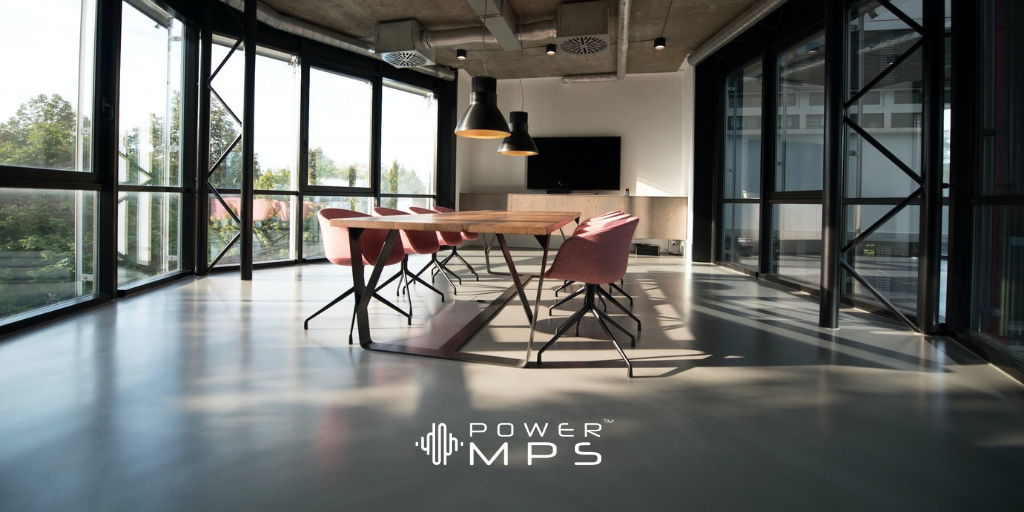There was a time, not so long ago, when American businesses built and rented large office spaces. Those spaces were filled with windowed corner offices and conference rooms. Their main floors were segmented by cubicles and break rooms. And, of course, there was the copy room – filled with giant machines ready to service all of those employees.
The heyday of big office spaces lasted over three decades. They began in the 1960s and continued into the early 1990s. At the time, most new office spaces were calculated at around 500 to 700 square feet per employee. You can find these large offices featured in cinemas such as “9 to 5” with Dolly Parton, Jane Fonda, and Lily Tomlin. “Die Hard,” starring Bruce Willis and Alan Rickman, is yet another film displaying the office style of the time. Even 1978’s Superman with Margot Kidder and Christopher Reeve featured the sprawling businesses spaces of the time.
A New Way To Look At Office Work
With the growing use of computers and inter-office networking, the 90s saw rapid changes in how businesses saw office space. As a result, office designers began looking for ways to create a more collaborative office culture. The ultimate goal was to increase bonds between employees, reduce the number of meetings, and save money by reducing the space needed to house the business.
Most of these well-meaning office planners intended to eliminate meeting rooms, reducing down to the minimum required for hosting outside visitors or executive gatherings. After all, a more collaborative office space would mean less time sitting around looking at presentations, and brain-storming would happen on the main floors, right?
But the focus on collaboration often meant smaller cubicles or a completely open office. Break rooms saw a reduction to minor coffee service and food storage locations. And the copy room usually became an open-air central location for general office use. Overall, office space averages decreased by 9.8% by as early as 1994.
By late 2015 new office space was beginning to average around 200 square feet per employee. By 2019, it was closer to 150. Now, with the mass forced closures of 2020, organizations worldwide have begun to realize the march of technology has created an opportunity to shrink that allowed space even further.
Small Gets Smaller
Now, with so much monetary loss and uncertainty caused by fluctuations in trade and the global response to COVID-19, many companies are honestly looking at their office space with a critical eye on cost savings.
This opportunity to have a segment of employees operate in a hybrid manner or completely telecommute offers a wide range of savings, primarily for a much lower floor space requirement. Even accomodating those who are still on-site becomes less expensive when a business incorporates modular workstations, desk sharing, and flex scheduling.
As an added bonus, cloud computing makes the need for large server rooms much less of an issue. Instead of housing massive servers on-site, businesses can partner with large cloud service providers to provide storage, platform, networking, and processing power managed and secured off-site.
Less Office, Same Printing
But a smaller office does not necessarily equal fewer employees. Moreover, it doesn’t lead to less of a need to print. Instead, the printing environment for corporate businesses choosing smaller office spaces becomes more complicated. Instead of the large copy rooms or single open-area printing spaces, there is a growing need for a secure, networked infrastructure to manage equipment, consumables, and costs.
There is also a greater need for back-end security to avoid information breaches and viruses. But most of all, these new, stream-lined offices require printers with a smaller footprint that operate with the same efficiency, functionality, and reliability as much larger legacy printing hardware.
Fortunately, Managed Print Service (MPS) providers are available to take up the small office challenge. Originally designed to keep large office printer environments serviced and supplied, these organizations are pivoting smartly into this larger, networked printing space. In addition, they are partnering with manufacturers to source more modest printer sizes without sacrificing capability.
They are also partnering with robust online tools like PowerMPS to provide a complete suite of services for these new, smaller office spaces. Businesses using this strategic tool provide their corporate partners with features like a secure e-commerce storefront; online service and maintenance requests, subscription and as-needed ordering; and unique online and mobile printer usage reporting.
So, while the standard office continues to get smaller, MPS providers are ready to help their partners address the printing challenges head-on. And innovative MPS businesses are quickly working on assembling the equipment, tools, and solutions required to conquer the changing needs and printing challenges presented by today’s incredibly shrinking office.
